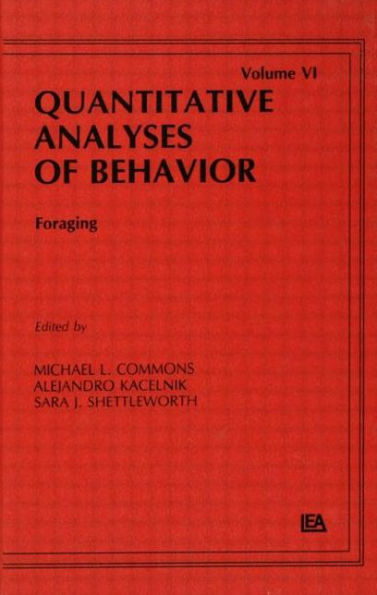Foraging: Quantitative Analyses of Behavior, Volume Vi
The sixth volume in this respected series systematically presents and evaluates quantitative models of various foraging phenomena, including: steady state decision rules; acquisition of decision rules; perception and learning in foraging behavior.
1136569068
Foraging: Quantitative Analyses of Behavior, Volume Vi
The sixth volume in this respected series systematically presents and evaluates quantitative models of various foraging phenomena, including: steady state decision rules; acquisition of decision rules; perception and learning in foraging behavior.
14.99
In Stock
5
1

Foraging: Quantitative Analyses of Behavior, Volume Vi
324
Foraging: Quantitative Analyses of Behavior, Volume Vi
324
14.99
In Stock

Product Details
| ISBN-13: | 9780898595505 |
|---|---|
| Publisher: | Taylor & Francis |
| Publication date: | 02/01/1987 |
| Series: | Quantitative Analyses of Behavior Series |
| Pages: | 324 |
| Product dimensions: | 6.00(w) x 9.00(h) x (d) |
| Lexile: | 1400L (what's this?) |
About the Author
From the B&N Reads Blog
